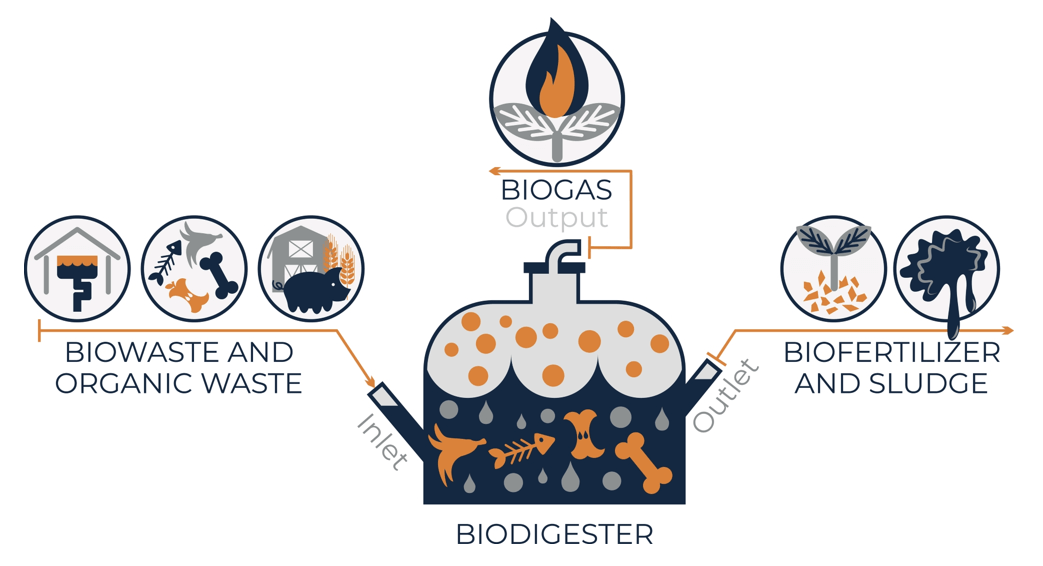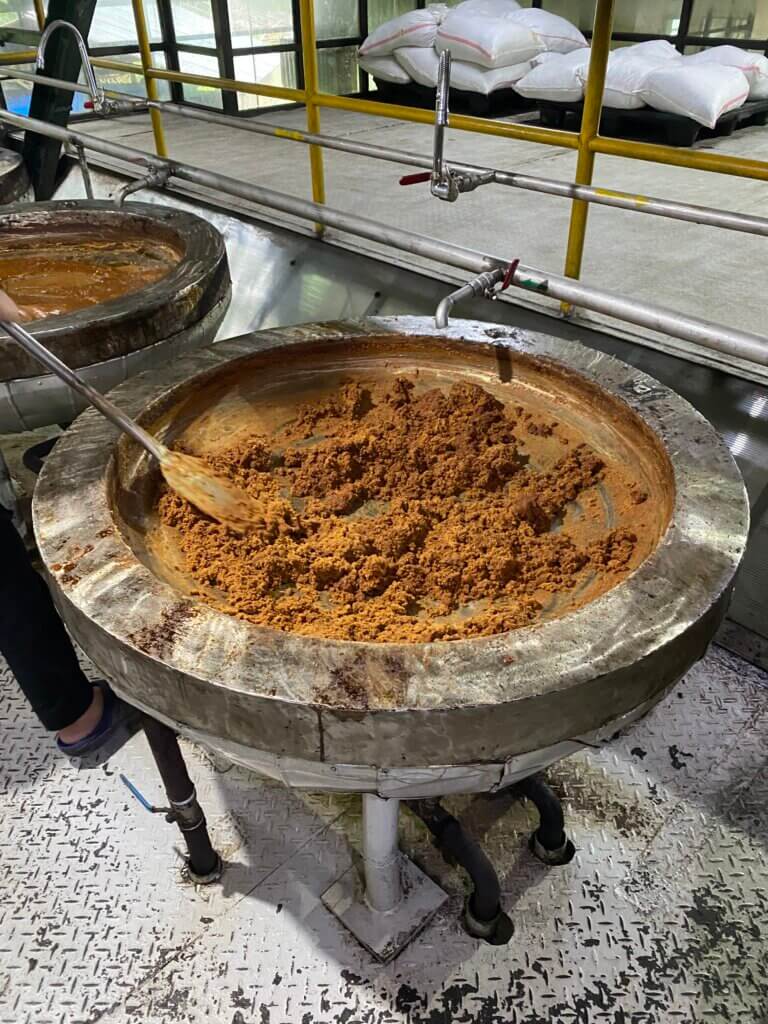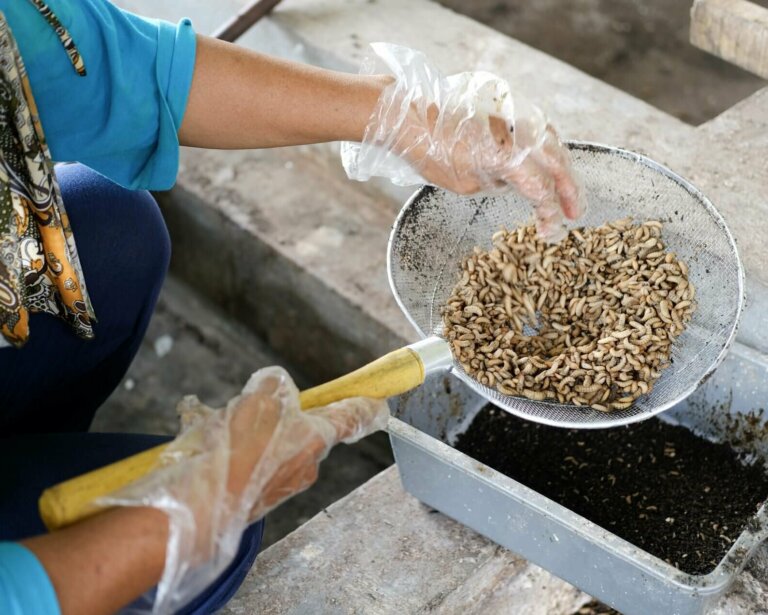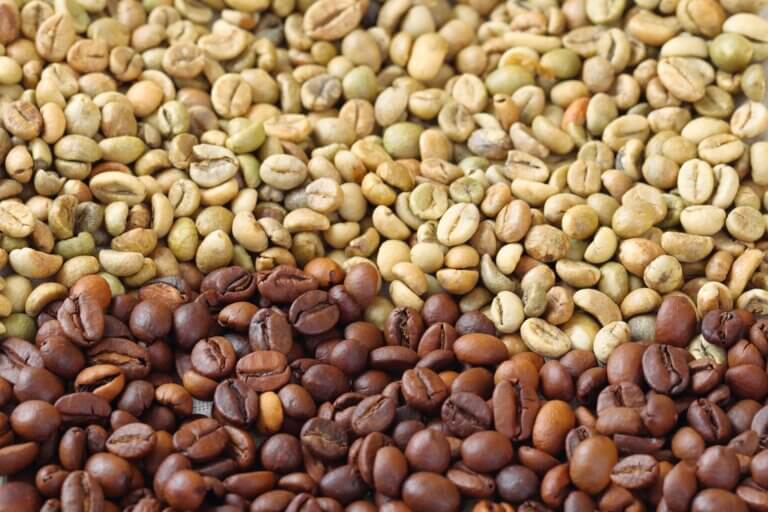We often talk about air pollution as something that comes primarily out of factory chimneys or vehicle exhaust pipes. But in fact, air pollution has many, sometimes surprising, sources and in developing countries, one of the biggest is agricultural waste, particularly that produced from rice farming.
Rice farming produces two types of waste. One is rice straw: the vegetative part of the rice plant that is separated from the grains and left behind after harvesting. The other is rice husk: the hard casing around a grain of rice that is removed during milling. Globally, 800-1000 million tons of rice straw and 100 million tons of rice husk are produced every year and conventionally disposed of via burning, producing dangerously high levels of air pollution as well as the greenhouse gas, methane. Not only does this present a significant risk to human health and to the climate, but it is also a wasted opportunity to obtain whatever economic value the rice waste may have.
Amid the health and environmental concerns of burning rice waste, alternative disposal methods are being explored. And one that has the prospect of being both eco-friendly and economical is using rice waste as a substrate for producing various commercial substances, via anaerobic digestion.
What is Anaerobic Digestion?
Anaerobic digestion (AD) is when microbial communities break down organic matter without the presence of oxygen, creating biogas and nitrogen-rich residues as byproducts. Biogas –a mixture of gases comprised largely of methane– can be substituted for fossil fuel-derived natural gas in vehicles, cooking and electricity generation, minus the destructive extraction process (fracking). Meanwhile, the residues can be used as fertiliser.
AD takes place inside a man-made chamber (digester), which is designed to keep out oxygen and can be constructed at any scale. They can either be constructed directly at their intended location (using simple materials like brick, mortar and concrete), or they can be manufactured off-site using more complex materials and installed at their intended location later.

To maximise the rate and efficiency of biogas production, conditions within digesters should be kept at low salinity levels, at temperatures between 30 and 40ᵒC, and at a pH range of 6.8-7.2, as these are the optimal conditions for the bacteria that perform AD. For good quality biogas, the carbon to nitrogen ratio (C/N) should be kept at 20–30. As plant matter has a higher C/N than this, it should be mixed with animal manure (which has a low C/N) to create an optimal ratio for biogas production.
From Big Waste to Big Benefits
To reduce pollution from rice waste, and to help rice-growing communities capitalise on the economic benefits of it, Seneca proposes a pilot project to install a network of anaerobic digesters in the rice-producing provinces of Laos. Such efforts have already proven commercially viable in the Philippines, and there are ventures in India and Singapore who offer paid services handling waste for AD.
Small scale digesters are commonly used in developing countries and Laos in particular stands to benefit from them. Rice is the country’s dominant crop and in 2021 alone, Laos produced 1.5 million tons of rice, meaning that at least the same amount of rice waste was generated too. Air pollutant concentrations in Laos are 4.3 times higher than the limit recommended by the World Health Organisation, and premature deaths from air pollution in the country are higher than in the rest of Southeast Asia.
As well as reducing air pollution and the associated health risks, AD of rice waste could also help to alleviate deforestation in Laos. As much of the population lives in rural areas with limited access to cooking fuel, they are often forced to fell trees for firewood. Burning this firewood in the kitchen in turn creates additional health risks from the smoke it produces. Biogas made from AD would therefore provide a smoke-free, deforestation-free cooking fuel for Laos’ rural population. Through mixing animal manure with rice waste for an optimal C/N ratio, AD could also remove a potential source of water pollution from the environment.
The Project
An ideal project owner will be a person or organisation that is already in the rice business, has relationships with farmers, and is able to source large amounts of rice waste from them. As this is a fairly expensive project, the PSP should also have the means to bear the costs in the short term.
Biogas can also be sold to energy companies to power turbines for electricity, which in turn can be fed into the national grid if the right infrastructure is in place. Additionally, the nitrogen-rich residues produced from AD hold some potential for revenue generation. Thanks to Laos’ considerable economic dependence on agriculture, there are plenty of potential customers (farmers) who will be interested in buying these residues as fertilisers for their crops.
Because AD prevents the burning of agricultural waste, with the right tracking and measurement mechanisms in place, it can also generate revenue as carbon credits. However, this will not be immediate, as the carbon credits will need several years to be certified and monetised.
Costs
The biggest cost of this project would be the anaerobic digesters themselves, which can be purchased from third-party vendors. While prices vary depending on size and technological complexity, Seneca estimates that the type of digesters needed for this project would cost US$ 1.5 – 2 million each.
However, the costs of operating the digesters are unlikely to be high, particularly since the average annual temperature of Laos (32ᵒC) is within the optimal range for AD, meaning that the digesters would not need to be heated as in colder climates. Transportation costs of rice waste are likely to also be small if digesters are set up close to rice farms.
Turning Rice Waste into Money
At present, the burning of rice waste in Laos not only puts the environment and public health at risk, but also squanders any opportunity to capitalise on its economic value. With so much rice waste being produced every year, the installation of anaerobic digesters could significantly alleviate the risks of burning (and other environmental problems like deforestation), as well as create significant profits for farmers and private investors through the commercial byproducts of AD.
Author: Seneca Impact Advisors
For more information, please contact impact@senecaimpact.earth







